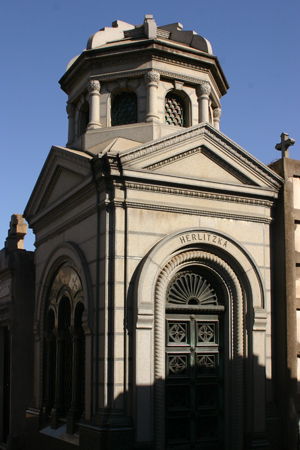
In spite of being on a major walkway, this discrete, Neo-Byzantine mausoleum is easy to dismiss… perhaps because there is no way to peer inside. The surrounding tombs capture our attention quicker. Most people move on, unaware of the beauty inside.
Mauro Herlitzka was one of many Italian professionals who made the move to Argentina at the end of the 19th century. Born in Trieste in 1871, he graduated from the University of Turin with a specialty in industrial/electrical engineering—a new & promising field at the time. Herlitzka then moved to Germany to work for Siemens & AEG (Allgemeine Elektricitäts-Gesellschaft), constructing a number of large electrical plants in Europe.
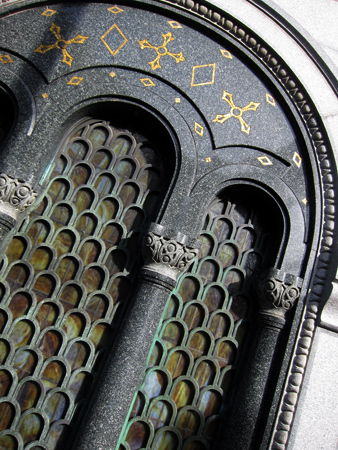
Arriving in Buenos Aires in 1897 as a rep for AEG, Herlitzka saw that the time was right to electrify Argentina. Although not the first electric company in the city, the CATE (Compañía Alemana Transatlántica de Electricidad, logo below) soon became the major provider… directed by Herlitzka. They negotiated a 50-year contract with the Buenos Aires city government & built an enormous complex in Dock Sud to provide for increased demand.

Herlitzka remained in Argentina for the rest of his life & became one of the country’s great industrial giants. Besides electricity, he developed telephone & telegraph lines for most of Argentina. Much of Herlitzka’s infrastructure survives today even though companies & holdings have changed hands several times since then. He passed away in 1960.
Herlitzka’s wealth funded the construction of this family vault & no expense was spared… probably why it isn’t openly visible to visitors. But if you’re feeling adventurous, there’s a way to get a look. Make sure no one is watching—you didn’t hear this from me—and blindly take some photographs through the hole above the door. It’s quite a reach, so don’t drop your camera inside!!! Or just look at thespectacular interior here:
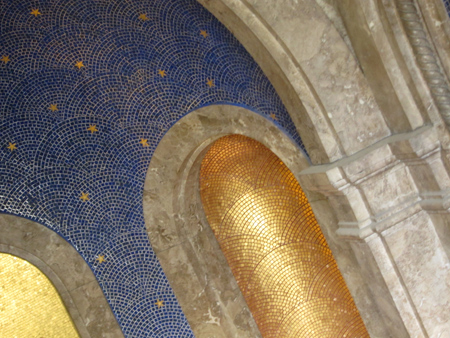
The glass is supposedly from Murano & the tiles are gold leaf. No way to confirm that these days. But when the sun enters either in early morning or late afternoon, the interior is bathed in golden light. Definitely one of the most heavenly in the entire cemetery.
For more on the history of electricity in Buenos Aires from the perspective of the CATE’s largest competitor—the CIAE—I have researched & written a series of 11 posts on my other blog, Endless Mile.
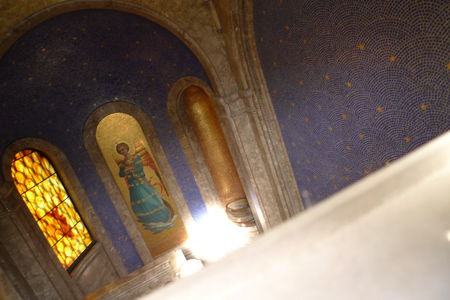
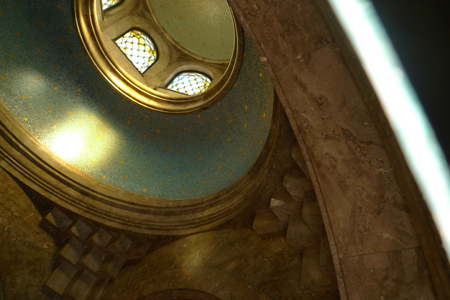
Very interesting. I would love to learn more about Mauro. My great grandfather immigrated to WI, USA about the same time. Thank you for posting this information.
dh
Hi David – Thanks for commenting. I couldn’t find much biographical info about Mauro… in spite of him being one of the most important engineers in Argentina’s history. Surely there must be a few books written about him. You might want to check further in Italy because it was common that Italians went either to Argentina or to the US. Those were the top choices… maybe they were from the same family. It’s possible. Saludos!
Acá en Corrientes hay una localidad llamada Herlitzka.
Miravos… vende todo que tiene que ver con la electricidad? Me mandás una foto? Gracias!
Compañía General de Ferrocarriles Económicos de la Provincia de Corrientes
El 23 de septiembre de 1908 fue promulgada una nueva ley de concesión ferroviaria a favor del empresario naviero Carlos Dodero, quien adquirió parte de las vías existentes del Ferrocarril Primer Correntino y otros elementos remanentes. En 1909 comenzaron los trabajos para ampliar el ramal hasta Nuestra Señora del Rosario de Caá Catí, en donde se construyó la Estación General Paz. Este ramal fue abierto en 1912, luego de la adquisición del material rodante y de propiedades. El ramal del Ferrocarril Primer Correntino desde el Ingenio Primer Correntino hasta la Estación Corrientes había sido levantando, por lo que se construyó uno nuevo por otra traza. Desde Lomas de Vallejos se construyó un ramal secundario de 178 km hasta Mburucuyá, totalizando la línea 208 km de vías. Estuvo a cargo de la construcción el ingeniero italiano Mauro Herlitzka, a la vez director del Banco Francés del Río de la Plata.
Entre el material rodante adquirido por Dodero se hallaba una locomotora diesel Orenstein & Koppel de origen alemán, que desde 1993 opera en el Tren del Fin del Mundo en Ushuaia, con su trocha modificada a 0,750 m. Otras locomotoras similares de este ferrocarril están expuestas en las estaciones Concordia Central y Paraná y en el Museo Ferroviario Scalabrini Ortiz de Retiro, Ciudad de Buenos Aires.
Muy buen aporte, Sergio! Te agradezco… parece que Mauro Herlitzka estaba metido en casi todo!